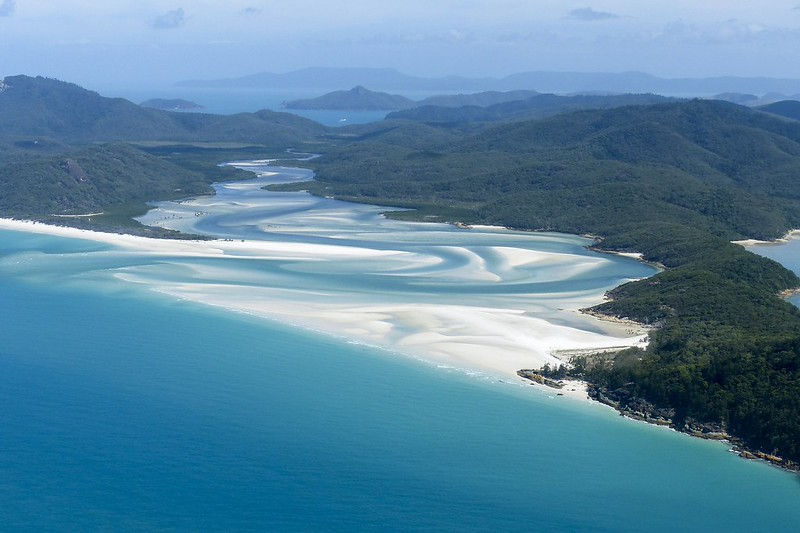Seaweed - What We Need
- Richard

- Jun 15, 2024
- 3 min read
The deterioration of seaweed ecosystems is an environmental crisis yet a valuable potential solution to climate change
The world's oceans are inextricably linked to the health of our planet, playing a critical role in regulating the climate and supporting biodiversity. Among the vital components of marine ecosystems, seaweed stands out for its multifaceted benefits, particularly its ability to capture carbon. However, the decline of seaweed habitats across the globe poses a significant threat not only to marine life but also to our efforts to combat climate change. This article delves into the deterioration of seaweed, its carbon capture capabilities, and the potential of restoring these vital ecosystems to mitigate climate change.
The Decline of Seaweed Habitats
Seaweed, encompassing a variety of macroalgae, is found in oceans worldwide, from the tropics to polar regions. It provides critical habitats and food for numerous marine species, from invertebrates to fish. Yet, seaweed forests are under severe threat due to several anthropogenic factors:
1. Climate Change: Rising ocean temperatures and ocean acidification disrupt seaweed growth and reproduction. Many species of seaweed, such as kelp, are highly sensitive to temperature changes, which can lead to massive die-offs.
2. Pollution: Nutrient pollution from agricultural runoff leads to eutrophication, causing algal blooms that block sunlight and deplete oxygen, creating dead zones where seaweed cannot survive.
3. Overfishing: The removal of herbivorous fish and invertebrates through overfishing disrupts the balance of marine ecosystems, allowing seaweed predators to flourish and decimate seaweed populations.
4. Coastal Development: Urbanization and industrial activities along coastlines destroy seaweed habitats through direct physical destruction and increased sedimentation, which smothers seaweed beds.
The degradation of seaweed habitats has far-reaching implications for marine biodiversity and the health of oceanic ecosystems. However, one of the most critical aspects of seaweed decline is its impact on global carbon cycles.

Seaweed and Carbon Capture
Seaweed is a powerhouse in the fight against climate change, primarily due to its ability to sequester carbon. Through photosynthesis, seaweed absorbs carbon dioxide from the atmosphere and ocean, converting it into organic carbon stored within its tissues. This process provides several key benefits:
1. High Carbon Sequestration Rate: Seaweed can grow up to 60 cm per day in optimal conditions, making it one of the fastest-growing plants on Earth. This rapid growth enables significant carbon uptake.
2. Long-Term Carbon Storage: When seaweed dies, a portion of the organic carbon it contains is transported to deep ocean sediments, where it can be stored for centuries or even millennia, effectively removing carbon from the atmospheric cycle.
3. Co-Benefits for Marine Ecosystems: By providing habitat and food for marine life, seaweed supports biodiversity and contributes to the overall health and resilience of marine ecosystems. Healthy ecosystems are better able to withstand and adapt to climate change.
Restoring Seaweed Forests: A Climate Solution
Given the significant carbon capture potential of seaweed, restoring degraded seaweed forests is a promising strategy for mitigating climate change. Restoration efforts can take several forms:
1. Protection of Existing Habitats: Implementing marine protected areas (MPAs) can shield existing seaweed forests from human activities that lead to degradation. Effective MPAs not only preserve seaweed but also the biodiversity they support.
2. Active Restoration Projects: Initiatives such as the restoration of kelp forests through transplantation and seeding can help regenerate lost seaweed habitats. These projects often involve community participation and collaboration with scientists to ensure success.
3. Sustainable Aquaculture: Developing seaweed farms in coastal areas can provide economic benefits while enhancing carbon sequestration. Seaweed farming requires no freshwater or fertilizers, making it an environmentally sustainable form of aquaculture. Moreover, integrating seaweed farming with other marine farming practices can improve overall ecosystem health.
4. Reducing Pollution and Coastal Runoff: Addressing the root causes of seaweed decline, such as nutrient pollution, through better agricultural practices and wastewater management, can create more favourable conditions for seaweed growth and survival.
The Way Forward
The restoration and conservation of seaweed forests offer a natural and effective solution to the growing threat of climate change. By recognizing the value of seaweed in carbon capture and ecosystem health, we can integrate seaweed conservation into broader climate policies and marine management strategies.
Investing in seaweed restoration not only contributes to carbon sequestration but also supports marine biodiversity, fisheries, and coastal communities. It is a multifaceted approach that aligns with the principles of sustainable development and environmental stewardship.
In conclusion, while the deterioration of seaweed habitats presents a significant environmental challenge, it also highlights an opportunity for innovative climate action. By restoring seaweed forests, we can harness the power of nature to capture carbon and build resilient marine ecosystems, paving the way for a healthier planet and a more sustainable future.
🌊🌏






Comments